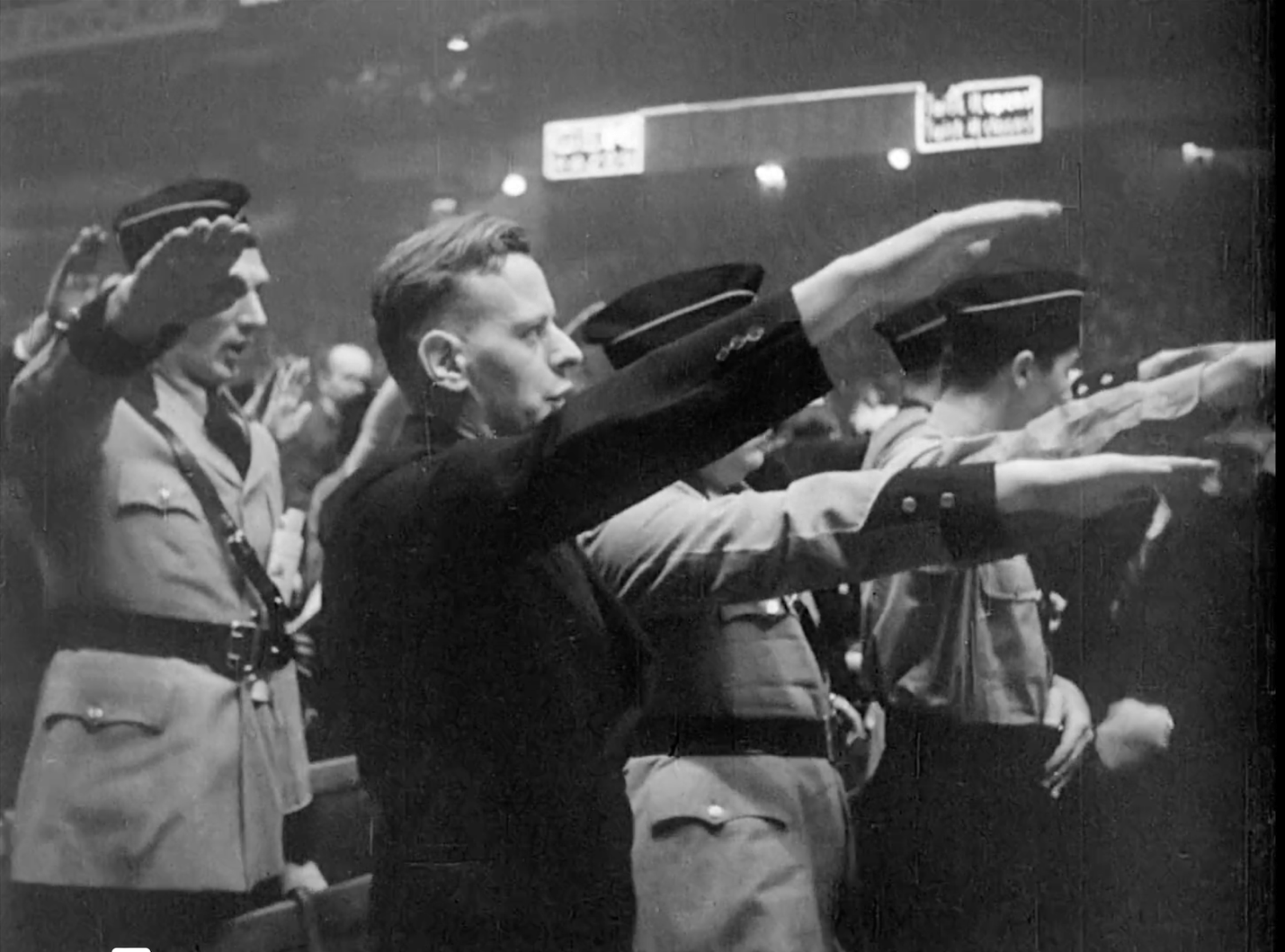Swastikas at Trump’s Madison Square Garden Rally Stir Controversy

Trump rally attendees saluting the former president at Madison Square Garden, October 27, 2024**
(NEW YORK, October 28, 2024) Controversy continues to swirl after the onstage display at Madison Square Garden last night, of a pair of 20-foot-high banners displaying black swastikas on a red field. They flanked Donald Trump’s podium and were brightly illuminated throughout the former president’s 80-minute address. Swastikas also appeared on a pair of cuffs encircling the upper sleeves of Trump’s blue suit jacket and on a gold-plated tie pin. Spectators close to the stage reported that there were brass swastikas dangling from the tassels of Trump’s loafers.
The former president made no explicit reference to the swastikas or to the Nazi regime with which it is generally associated. Instead, he stuck to his standard campaign promises: mass deportation of immigrants, arrest of political opponents, closing of opposition press, an end to voting in the U.S. after his election, and dictatorship from “day one” or for “one day” of his administration (he promised both). Trump’s failure to mention Hitler or the Third Reich has led commentators to scratch their heads and wonder if the swastikas had some other meaning than the expected one.
Swastikas are interlocked crosses with the end of each arm bent at a right angle. They are symbols venerated by Hindus, Buddhists, and Jains. In Sanskrit, the word swastika means “omen of well-being.” It is a character in the Chinese alphabet, a Norse glyph signifying Thor’s thunderbolt, and a Native American (Navajo) symbol of good luck. But it’s the association of swastikas with the German Nazi Party (1920-40s) that’s been the cause of so much press coverage over the past 24 hours. CNN’s Dana Bash, reporting on the speech for the network, commented: “If, as it appears, Trump has embraced the swastika, that would be a sign that he is becoming more extreme in his views.” President Biden told reporters this morning, as he boarded a helicopter for his private residence at Rehoboth Beach, Delaware, “C’mon man, there is no place for Nazi symbols in the election campaign.” He continued: “That’s not who we are; we’re Americans, first.”
When asked by reporters to respond to suggestions that his boss was emulating Hitler, Trump’s press secretary Steve Cheung denied any association of the swastika banners, swastika arm cuffs, swastika tie pin, and swastika tassels, with Nazism. He told reporters at his morning briefing: “Only radical-liberals in the Marxist press, and individuals suffering from Trump Derangement Syndrome could make such ridiculous claims. The President was drawing upon an ancient symbol of good fortune to remind his audience that when elected, he will make American great again.”
Challenged to explain why Trump didn’t discourage the frequent Hitler salutes and regular outbursts of “Heil, mein Führer!” by members of the Madison Square Garden audience, Cheung answered: “President Trump, unlike his fascist-Marxist opponent Commie-la Harris, believes in free speech.” The former president himself left the swastika issue unmentioned in his post last night on X, saying only: “We will root out the Communists, Marxists, Fascists, and Radical Left Thugs that live like vermin within the confines of our Country… The threat from outside forces is far less sinister, dangerous, and grave, than the threat from within.” The controversy over Trump’s political allegiances therefore continues.
**The photo of course, is of the crowd at the Nazi rally held at Madison Square Garden on February 29, 1939. The event was organized by the German American Bund. Please see the short documentary: “A Night at the Garden” (2017) directed by Marshall Curry, produced by Laura Poitras and Charlotte Cook.







No comments:
Post a Comment